TECHNOLOGY OF FREEDOM:
Adventure in Hypertext
Freedom is the joy of adventure
Freedom comes in many ways.
Some, like the mountains,
offer grandeur and beauty.
Here's a new approach to freedom:
- a rudimentary but operable technology
- an invented system of structure
- co-ordination of engineering and psychology
- hey, what is this freedom stuff, anyway
- presented as an adventure for the visitor's enjoyment

| |
THE BIG PICTURE

|
Freedom grows out of, into and through structures:
- Climbing a mountain
- Surfing the web
- Building a project
- Playing card games with friends
- Working a network of business relationships
- A jury reaching a verdict
- Political institutions
|
Visiting this website
is like a trip to the mountains
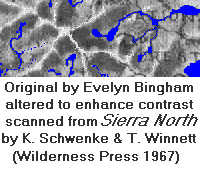
- In the mountains, the primal elements are water and rock
- Rain, snowmelt and glacial ice flow in channels they
themselves carve into stone
- Watercourses and ridgelines develop together
(see adjacent image, adapted from a map giving an overhead view)
In these pages, the primal elements are
- the mystery of freedom
- a technology of devices
The elements come together
in a cluster of pages called
Base Camp.
There are three ways to Base Camp
 --Water Trail
--Water Trail
- Freedom is real and we experience it in many ways. Freedom is
also a conceptual marshland. Water Trail goes
cross-country to skirt the
marshes of philosophy, perhaps avoiding falling in
(no avoiding the bugs, though). It constructs an artificial psychology
and finds a way ("The Way of Error") to
notate structures for interpretation through devices so
as to resemble activity of human experience. The initial
system is crude and deals with only very simple problems,
but it includes
a capacity for development that leads to revised
systems of greater scope. Development is directed
toward notation and organization of ambiguities
that mark places where freedom can be exercised.
-

--Ridge Route
-
Ridge Route presents
a series of
hardware devices,
similar to actual manufactured items.
The original device is a simple
associative (content-addressible)
memory system based on a resistance
network. Subsequent devices
build on the original and develop progressive scope
in co-ordination with development of the artificial
psychology of Water Trail.
Each device uses
commands that organize data
and that mimic shifts of attention within structures.
Commands can be programmed
to organize data through mass action.

-

--Kwik Tour
- Kwik Tour is an entertaining survey based on feelings. Please be prepared
for something wild.
Other pages here that may be of interest:

- DO NOT PUSH THIS BUTTON!
You are already at the Entry Page
- Website
- navigation buttons and technical info
- Author
- Robert Kovsky

- like a table of contents, organized and linked
-


- To top of this page.

All materials copyright by Robert Kovsky, 1997.

Gotcha!
You fell for the old "wet paint" ploy.
You also may have experienced a small thrill of freedom.
(That's why you did it, I suspect.)
You have been relocated to a different place in the original page. It's called
an "internal link."
Nothing additional need be loaded from the slow, remote
server.
There is a difference here between:
- an internal link that shifts your attention within a page; and
- an inter-page link that shifts your attention
from one page to another page.
This website includes a puzzle: "pixie dust" is hidden in the website. The first person to find it
will get his or her name and achievement inscribed here.
This website also includes an entire level of detail not discussed in the examples.
This level of detail can be identified with
a one line statement. Once you see it, it should be obvious.

 -- This wingfoot button returns you to the source of the diversion
-- This wingfoot button returns you to the source of the diversion
To top of Entry Page.
All materials copyright by Robert Kovsky, 1997.


A View of Base Camp
At the center of Base Camp is one example: this website
This website contains:
- approximately thirty pages (files on the server)
- many hypertext links between pages
- worked-out examples of systems it describes

The terrain is first seen at a low level but rises fast
The visual images are like glimpses of summits, each prominent and individual, but appearing only in fragments. The words are like valley walls, less dramatic and explicit, but
marking the thread of concept that leads to the high elevations.

 A key element of structure is the "link between pages." For example, there is a link
that will take you
from this entry page to a page describing Ridge Route, namely the ridjguid
page.
A key element of structure is the "link between pages." For example, there is a link
that will take you
from this entry page to a page describing Ridge Route, namely the ridjguid
page.
 You can use a link to exercise freedom
You can use a link to exercise freedom
Often, one page will contain links to several different pages. The visitor can
exercise freedom, by
clicking on a link. The visitor can also ignore any and all links,
use navigation tools in the browser or just
"click off."
You can use links to build structures.
Children's toys provide convenient
metaphors. Think of blocks,
tinker toys, lincoln logs, and legos.
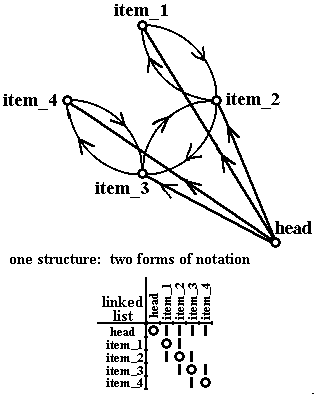 In the linked list
(familiar to all programmers), there is a head to the list and several items (four here).
Different notations provide a variety of ways to grapple
with these structures.
In the linked list
(familiar to all programmers), there is a head to the list and several items (four here).
Different notations provide a variety of ways to grapple
with these structures.


The first image you will find on arrival at Base Camp shows links between pages in this
website. Here's a piece of that image.


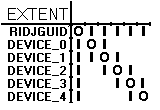 The work at Base Camp depends on strong structures, like "backbones"
embedded in this website that can
support less orderly structures.
The work at Base Camp depends on strong structures, like "backbones"
embedded in this website that can
support less orderly structures.

This website is governed by a simple structural system. The work at Base Camp centers
on a revision of that simple structural system. The revision proliferates into different
forms:
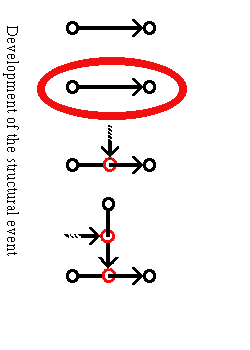
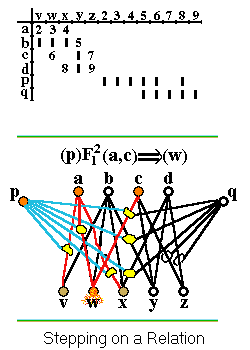
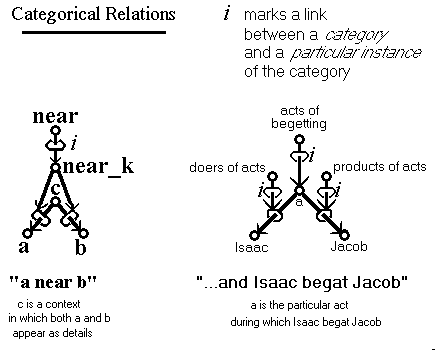
 Ambiguity structures are developed to co-ordinate different forms. Ambiguity structures
are the technical expression of freedom in these pages. Here is the most explicit part of
an ambiguity structure reached from Base Camp. It co-ordinates a form based on
static organization with one based on active devices.
Ambiguity structures are developed to co-ordinate different forms. Ambiguity structures
are the technical expression of freedom in these pages. Here is the most explicit part of
an ambiguity structure reached from Base Camp. It co-ordinates a form based on
static organization with one based on active devices.

 -- Return to reference
-- Return to reference
To top of Entry Page.
All materials copyright by Robert Kovsky, 1997.



 --Water Trail
--Water Trail






 A key element of structure is the "link between pages." For example, there is a link
that will take you
from this entry page to a page describing Ridge Route, namely the ridjguid
page.
A key element of structure is the "link between pages." For example, there is a link
that will take you
from this entry page to a page describing Ridge Route, namely the ridjguid
page.
 You can use a link to exercise freedom
You can use a link to exercise freedom In the linked list
(familiar to all programmers), there is a head to the list and several items (four here).
Different notations provide a variety of ways to grapple
with these structures.
In the linked list
(familiar to all programmers), there is a head to the list and several items (four here).
Different notations provide a variety of ways to grapple
with these structures.

 The work at Base Camp depends on strong structures, like "backbones"
embedded in this website that can
support less orderly structures.
The work at Base Camp depends on strong structures, like "backbones"
embedded in this website that can
support less orderly structures.



 Ambiguity structures are developed to co-ordinate different forms. Ambiguity structures
are the technical expression of freedom in these pages. Here is the most explicit part of
an ambiguity structure reached from Base Camp. It co-ordinates a form based on
static organization with one based on active devices.
Ambiguity structures are developed to co-ordinate different forms. Ambiguity structures
are the technical expression of freedom in these pages. Here is the most explicit part of
an ambiguity structure reached from Base Camp. It co-ordinates a form based on
static organization with one based on active devices.